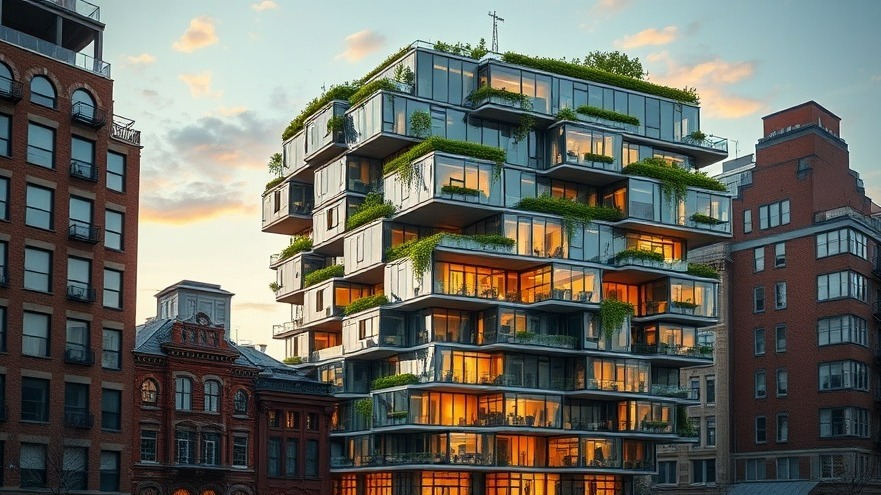
Introducing the Innovative Mountainous Residential Development in Toronto
The architectural landscape of Toronto is about to change dramatically, thanks to a new residential project known as King Residences, designed by the renowned firm, Bjarke Ingels Group (BIG). This ambitious development is characterized by its striking mountainous form which aims to harmonize with the natural contours of the area. The project is not just about aesthetics; it represents a growing trend in urban design that prioritizes both livability and sustainability, crucial factors for the modern digital nomad.
Reimagining Urban Living: What Makes King Residences Special
The King Residences is set to rise high above the city skyline, showcasing modern design while incorporating green spaces within its structure. Each level of the building is purposefully staggered to create terraces, providing residents with both private outdoor space and breathtaking views of Toronto’s vibrant cityscape. This aspect is particularly appealing to remote workers who need a balance between productivity and a relaxing home environment.
Connect with Nature Without Leaving Your Home
For digital nomads, creating a workspace that enhances productivity while also promoting well-being is essential. The design of King Residences acknowledges this necessity, integrating lush greenery across multiple levels, designed not only to beautify the surroundings but to improve air quality and mental health for its inhabitants. This connection with nature is increasingly recognized as vital for maintaining focus, reducing stress, and overall enhancing the quality of workspace environments.
Maximizing Space: Practical Tips
As spaces in urban settings tend to be compact, it’s crucial for remote workers to optimize their environment. Here are a few ergonomic strategies to consider when designing your home office within smaller living spaces like those at King Residences:
Use Multi-Functional Furniture: Invest in a desk that can transform from a workstation into a dining table to save space.
Incorporate Natural Light: Position your workspace near windows to enhance visibility and mood. Natural light plays a critical role in reducing eye strain during long working hours.
Maintain Good Posture: A chair that supports your back can significantly impact your comfort and productivity. Consider an ergonomic chair, especially designed for prolonged sitting.
Local Culture Meets Functional Design
King Residences reflects Toronto's diverse culture through its architectural choices, blending modern influences with the city's historic context. This intentional design not only caters to the practical aspects of living but also celebrates community building. For digital nomads, engaging with local culture can offer inspiration and motivation, making it easier to balance work with leisure in beautiful urban spaces.
Future Trends: The Evolution of City Living
As cities evolve, developments like King Residences signal a shift towards more thoughtful living spaces that prioritize well-being. With remote working becoming a permanent feature of the job market, urban planners and architects are tasked with creating environments that not only meet housing needs but also the unique lifestyle demands of a modern workforce. Those considering places that support their remote working lifestyle will find that structures dedicated to integrating nature, community, and comfort is the future of urban living.
In conclusion, King Residences in Toronto represents a groundbreaking shift in how residential developments can support a community of modern, mobile workers through thoughtful design. As this trend continues to develop, it is essential for digital nomads to stay informed about these exciting changes in urban residential architecture.
Stay ahead of the curve! Look for opportunities in your own living space to incorporate ergonomic designs that promote well-being and productivity.
 Add Row
Add Row  Add
Add 




Write A Comment